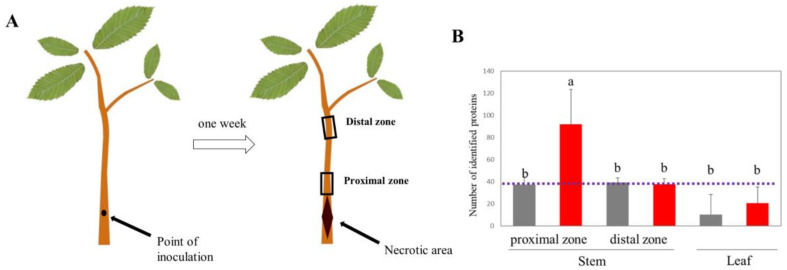Figure 1.
Stem inoculation as a model system to study Phytophthora cinnamomi infection on chestnut. (A) A schematic depiction of the experimental design. Two-year-old sweet chestnut saplings were stem wounded and subsequently inoculated with mycelium from P. cinnamomi mating type A2. Control plants received mock treatment. One week later, stem sections bordering the necrotic area (proximal zone) and around 20 cm upstream of it (distal zone) were harvested and used to extract total proteins and metabolites. (B) Number of high-scoring proteins assigned to the P. cinnamomi proteome in inoculated (red) and mock-treated (gray) chestnut saplings. Error bars represent standard deviation of at least three biological replicates. A false positive threshold corresponding to the maximal number of identified Phytophthora-like proteins in the mock-treated tissues is depicted by a dashed line. Different letters represent statistically significant differences according to Kruskal–Wallis test (p < 0.05).

